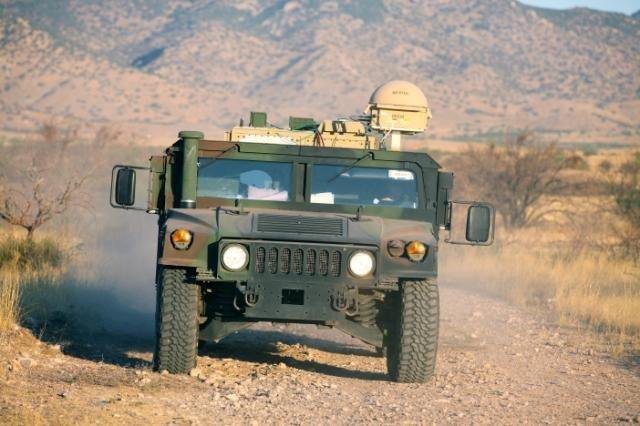Using elements similar to OnStar and other diagnostic software found in today’s cars, the Army is introducing a new preventative maintenance concept for its tactical communications network.
In a move to increase efficiencies and equipment reliability, the product office for the third generation of the tactical communications network backbone, Warfighter Information Network-Tactical, known as PdM WIN-T, Increment 3, is implementing the new strategy, known as Condition Based Maintenance Plus, or CBM+.
“Our approach is designed to increase equipment performance while decreasing maintenance and support footprints,” said Lt. Col. Ward Roberts, product manager for WIN-T Increment 3, which is still in testing and development. “Considering that the bulk of a program’s costs are in logistics and sustainment, we see CBM+ as an opportunity to increase efficiencies, not only for our program, but for other Army programs as well.”
WIN-T Increment 3 is moving forward with the implementation of the CBM+ infrastructure on the heels of recent study that showed the plan could enhance system performance while potentially delivering a six-to-one return on investment.
“When you are talking about a multi-billion dollar program like WIN-T, and if 70 to 80 percent of your program cost are in sustainment, then why wouldn’t you do something that decreases sustainment costs?” said Mariah Stein, WIN-T Increment 3 Tactical Relay Tower project and logistics lead.
While the Army is already pursuing a CBM+ strategy in its aviation fleet, WIN-T Increment 3 is the Army’s first ground-based system to pursue CBM+. Part of the PdM’s goal is to serve as a forerunner for fellow product offices by demonstrating how the open, integrated architecture approach of CBM+ can embed in ground combat systems and other Command, Control, Communications, Computers, Intelligence, Surveillance and Reconnaissance, known as C4ISR, systems.
CBM+ focuses on better diagnostics and anticipatory maintenance, rather than traditional reactive maintenance, Stein explained. It lowers ownership costs while increasing equipment reliability, availability and maintainability, always a key sustainment priority for the Army. The current Network Management Software, or NMS, used by WIN-T Increment 1 and WIN-T Increment 2, Soldiers are only alerted to problems when equipment fails, but CBM+ sends out error codes to Soldiers so they can intervene and actually prevent that failure from occurring.
“If a system’s fan starts to overheat or gets bogged down with sand, the sensors would tell a Soldier that it was only operating at 70 percent,” Stein said. “Then the Soldier could swap out the fan or clean it before the entire system burned out and stopped working completely.”
It is common practice for Soldiers out on forward operating bases, known as FOBs, to swap out equipment with one of their unit’s spares if they aren’t sure why the equipment failed. The used equipment is sent from the FOB all the way back to the depot, often unnecessarily, wasting spares, shipping cost and time. CBM+ can self-diagnose that equipment before it fails, and it can also order needed parts on the spot and get them back to the unit.
Additionally, instead of a Soldier driving out to a FOB every two weeks to conduct routine equipment maintenance, that work can be done on an as-needed basis. Users will be alerted when equipment reaches a certain threshold of operation set on the system’s sensors, and maintenance can be scheduled at that time, saving the Army both time and money in unneeded maintenance.
WIN-T Increment 3 improves upon the existing capabilities of WIN-T Increment 1, which provides Soldiers with high-speed, high-capacity voice, data and video communications down to battalion level units, at-the-quick-halt, and WIN-T Increment 2, which provides on-the-move network communications down to the company level. Among the advanced capabilities provided by WIN-T Increment 3 is an aerial tier that will be added to the existing space and terrestrial architecture to thicken the network and provide a substantial increase in capacity and reliability.
In addition, the WIN-T Increment 3 program continues developmental testing on the Joint Command, Control, Communications, Computers, Intelligence, Surveillance and Reconnaissance, or JC4ISR, radio, which will dramatically increase throughput capacity and extend communications ranges. The implementation of CBM+ will help keep WIN-T Increment 3 equipment running at peak performance.
The CBM+ effort is designed as an “add-on” to WIN-T’s current NMS and will be implemented in increments called “spirals,” with spiral 1 focused on WIN-T Increment 3’s advanced Network Operations capabilities that help signal officers manage the network. Among other benefits, Spiral 1 will insert a harvesting tool that can take real-time diagnostic data from applications and send it to signal Soldiers so they can recognize errors and prevent a loss in network capability.
Following the PdM’s current schedule, spiral 1 capabilities are expected to be fully incorporated in time for WIN-T Increment 3’s currently scheduled developmental test in 2015 and limited user test in 2016. Spiral 2 will focus on external interfaces to Army logistics systems.
“CBM+ just makes sense,” Roberts said. “Knowing what is wrong with your equipment is half that battle to get it back operational and having the capability to actually prevent equipment failure goes a long way in keeping our Soldiers safe and the network strong.”










